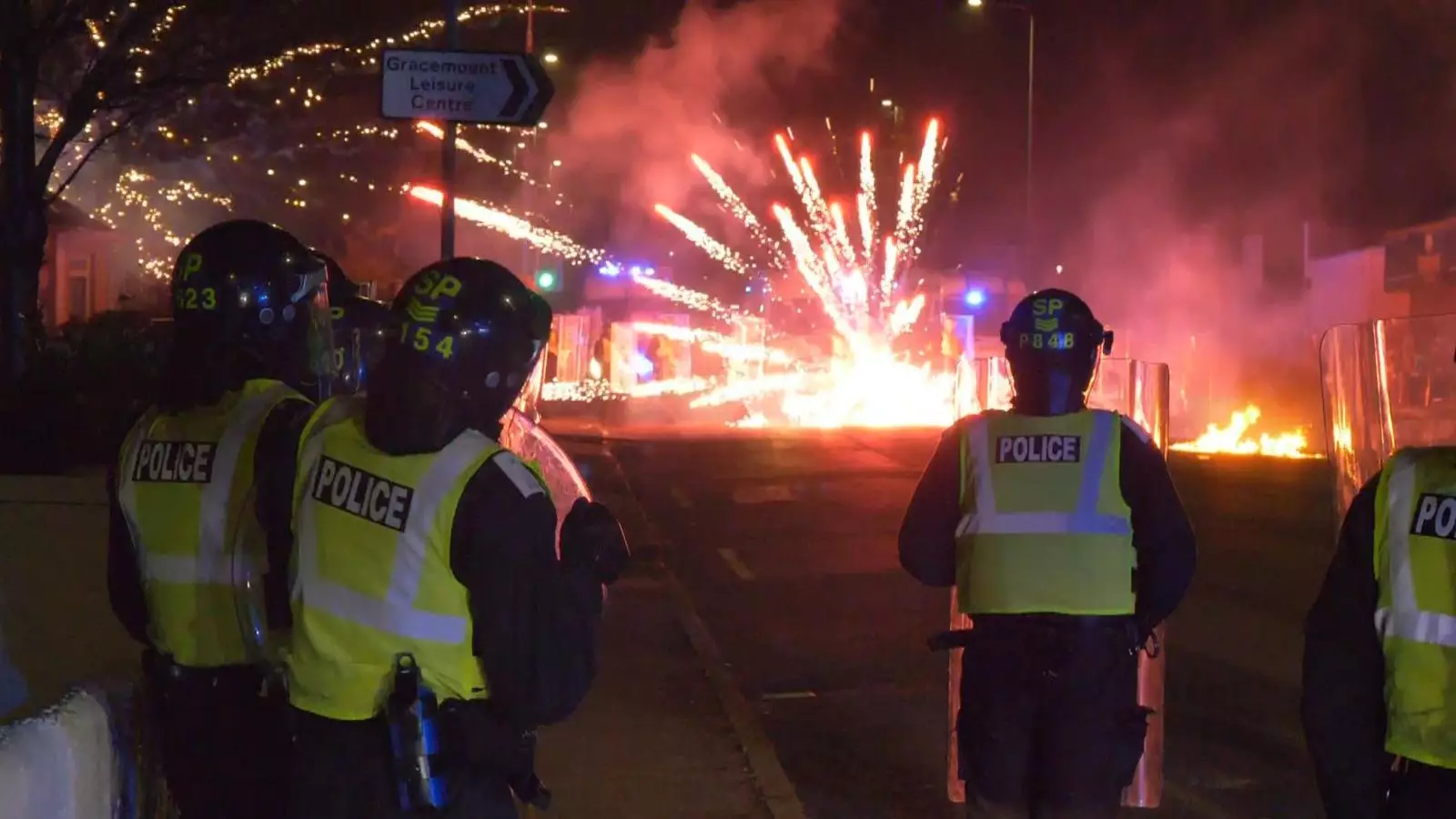In a troubling display of disorder during the recent Bonfire Night celebrations, large groups of young people in Edinburgh clashed with law enforcement, leading to a chaotic night marked by the throwing of fireworks, bricks, and bottles. Reports emerged from various neighborhoods, including Sighthill, Niddrie, Gracemount, and Gilmerton, highlighting significant unrest that prompted a robust police response. Social media footage revealed intense moments as riot police, equipped with protective gear, confronted dangerous situations where fireworks erupted nearby.
The volatility escalated to alarming levels when one police officer sustained injuries after a brick was hurled through her patrol car’s window. This incident, indicative of the strained relationship between some youths and law authorities, resulted in at least one arrest amid the tumult. The need for heightened police presence was underscored by the local authorities, who granted additional stop-and-search powers in response to intelligence suggesting planned disturbances and fireworks-related offenses.
Operations to address the mounting unrest, including the use of aerial surveillance, marked a prepared and strategic approach from the local police. Dubbed Operation Moonbeam, the initiative aimed to curtail fireworks-related disruptions while ensuring the safety of both the officers and the public. Meanwhile, the Lothian Buses service strategically withdrew its operations from Niddrie, a decision grounded in the need to prioritize passenger safety amid the chaos.
Earlier unrest in Niddrie on October 31 had already set a concerning precedent, as public transport vehicles fell victim to attacks involving fireworks and bricks. This pattern of behavior among certain youths raises substantial questions about community engagement and the efficacy of preventive measures before fireworks displays.
The consequences of these disturbances extend beyond immediate safety concerns, as they prompt discussions surrounding legislative responses to the use of fireworks. The recent establishment of Fireworks Control Zones (FCZ) in Edinburgh and Glasgow, in place from November 1 to 10, highlights a proactive step aimed at mitigating future disturbances. Offenders caught igniting fireworks within these designated areas face significant penalties—a fine of up to £5,000 or even imprisonment—emphasizing the seriousness with which authorities are addressing this issue.
As other regions, such as East Sussex’s Lewes, managed to conduct their traditional bonfire night without incident, it becomes clear that cultural variations in celebrations may contribute to differing community dynamics and police interactions. The Lewes event, notorious for its burning effigies and vibrant displays, managed to prioritize public safety amid concerns of overcrowding, furthering discussions on how best to merge tradition with community responsibility.
The chaos seen in Edinburgh serves as a wake-up call for local authorities, communities, and families. By fostering dialogue and promoting responsible celebration practices, stakeholders can work towards resolving tensions and preventing similar occurrences in the future. It is essential for community leaders, parents, and youth to engage collaboratively, ensuring that festivities such as Bonfire Night can be enjoyed safely and responsibly, without the shadow of disorder looming over them. The dialogue sparked by this incident has the potential to reshape the way fireworks are integrated into celebrations, reflecting a commitment to public safety and community well-being moving forward.

